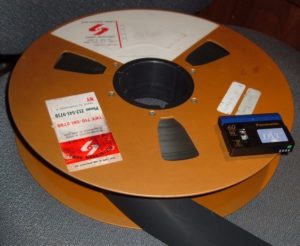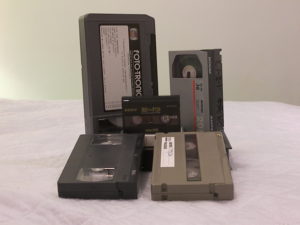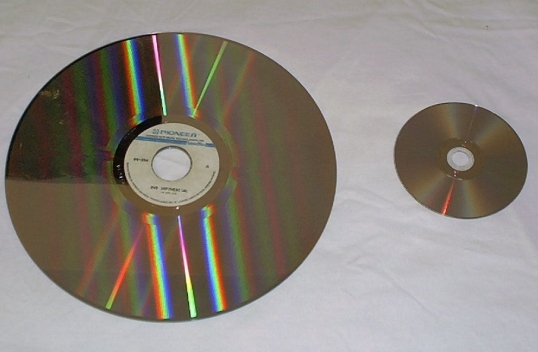Video Formats :
If you think audio formats has had it’s share of format wars it pales in comparison with their equivalents in the video world. In terms of video media, the technology transition has also followed a similar curve when compared to its audio siblings. What I mean, is video started off with projected film, then moved onto videotapes, discs and finally to streaming formats in the internet age. In the case of film formats during the early days, the average consumer did not need to exercise his/her choice in the initial days of film evolution as the concept home video came much later. The 35mm film standard which originated way back in 1908, has reigned supreme even to this day as the defacto choice for film recording and projection, as well as for photographic film for still cameras. For most part of the 20th century, it was the studios and the projectionists who had to bother about film formats and coloring schemes such as cinemascopes, Eastman color, Technicolor etc.
From the later part of the 1950’s, Videotapes make their entry as a convenient alternative to film reels and provides a means of recording images and sound on to magnetic tape. The earliest use for videotapes were not meant for the home, but for broadcasting studios and they used this humongous format called 2 inch quadruplex (also called 2″ quad, or just quad, for short). To compare a quad tape with a modern miniDV tape (used in modern camcorders), here’s a comparative shot.
It was evident that open-reel tape formats, where the tape had to be manually be adjusted from one spool to another, would just not cut it for the home market. In the early 70’s Sony introduces a format called the U-Matic which was among the first video formats to contain the videotape inside a cassette. It was endorsed by other manufacturers like JVC and Panasonic, but it was a professional format, used primarily in the Broadcasting industry.
VHS vs BetaMax
Cut to the late 1970’s and this is where the world’s first major format war commences and two consumer-grade video tape formats meant for the home video market is unleashed. The first is the BetaMax (or Beta) system, developed by Sony, and soon on
it’s heels comes the VHS system, developed by JVC. For nearly half a decade, these warring formats fought neck-to-neck, bolstered by the fortunes of the supporting companies, in an attempt to establish itself as the dominant format for home video. It is now believed that though the Beta had superior video recording and reproduction capabilities, but was limited to a maximum time of just an hour. The Advantages of VHS on the other hand, included longer playing time (3.5hours) , faster rewinding and fast-forwarding, and a less-complex, lower-cost tape transport mechanism. Finally, what won the war for VHS was cheaper units (recorders and tapes) owing to the open standard used for VHS technology which allowed mass production without licensing costs. Sony’s Beta on the other hand was a proprietary standard. An analogy being why Dell can charge you less for a Linux installed PC, as compared to an identically equipped Windows PC. Though VHS rules the roost for nearly two decades, it had to succumb to Obsolescence by the later part of the 90’s when digital video came out of the woodwork. Sony’s Beta, though shunned by the home video market, was used extensively by the broadcasting industry, before also being eclipsed by Digital Video (DV). Heres a shot of the different videotape formats prevalent over the years :
Optical Formats
As mentioned in my previous segment on audio formats, video works in the same way as audio, and magnetic tape based transports had its share of pitfalls which included noise, snow and general deterioration with time. This brings us to the next round of format wars,
LaserDisc vs the DVD : In 1978, The LaserDisc (LD) format was launched. It is a home video disc format, and was the first commercial optical disc storage medium. The medium itself at its most fundamental level is still recorded as a series of pits and lands much like DVDs and CDs are today. Unlike DVDs however, the video was recorded uncompressed, and though reproduced videos with exceptional clarity and details for it’s time, it was the size of an audio record and similarly stored content on both sides of the disc. Here’s a comparative shot of a LD alongside a DVD.
Though the format itself produced a consistently higher quality image than its rivals, the VHS and Betamax systems, the format was poorly received in North America. In Europe and Australia, it remained largely an obscure format. It was, however, much more popular in Japan and in the more affluent regions of South East Asia, such as Hong Kong and Singapore. Laserdisc was the prevalent rental video medium in Hong Kong during the 1990s. The reasons as to why the DVD replaced the videotape and LD is a no-brainer. It combined all the benefits of digital recording and storage, was more versatile in mixed media usage (Video, audio, data), and stored a massive amount of data (4.7gb) in a relatively tiny and ubiquitous format, already popularized by the Audio/Data CD. However, if there’s one thing we have learned from history is that no technology, however great, will always be relegated to the pages of history with time. So it is for the now-ubiquitous DVD, and the advent of the next generation optical media, and yet another format war. …… to be continued





Dear DebD,
Undoubtedly a nice & informative post. I would suggest, it would have been further more readable, if you plugg or start this 2nd part with reference of first post.
This way people can relate this part to first one easily.
Sunshine